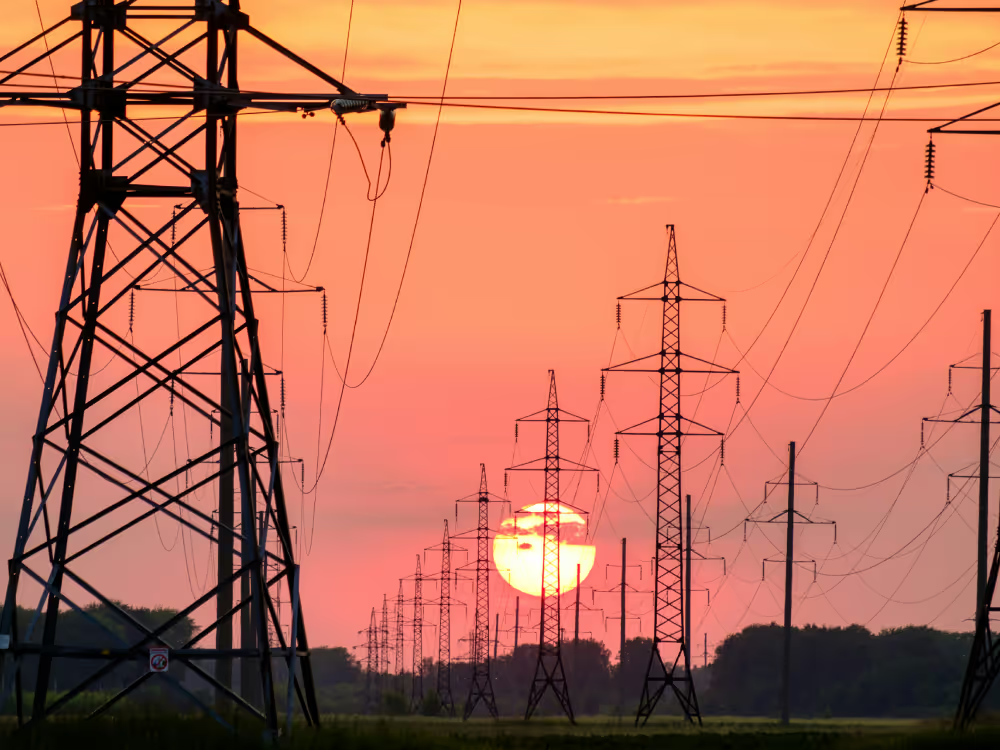“Financial bubbles are then a phenomenon leaving a very complex legacy … after the bubble, (the real infrastructural networks remain) and they generally achieve enough coverage during the frenzy to become positive externalities.”
— Carlota Pérez
The AI boom has all the hallmarks of a bubble. The world’s biggest tech firms are spending like it’s wartime, building city-sized data centres, and hoovering up chips, water and talent, with the breathless hype and uncertain returns to match.
As investors, the term ‘bubble’ might not fill you with the utmost confidence. Bubbles burst, after all. But maybe these “collective delusions” aren’t always a bad thing. At the very least, they may be an expression of a future that is radically different from now, according to a recent work by Byrne Hobart and Tobias Huber. History shows that periods of over-investment – in the railways, in telecoms, in the dot-coms – often precede real breakthroughs, building the infrastructure future innovations rely on. One era’s bubble is another era’s broadband.
The breakneck spending on AI and associated infrastructure might not seem rational in the here and now. Certainly, there is no shortage of critics. The AI boom is proving to be rather expensive, and could double global data centre energy demand by 2030. But could investment in AI be good for future innovation, our productivity, and prosperity? Only time will tell.
The artificial intelligence industrial complex
Let’s look at the figures for three mega cap companies that have ramped up AI investment: Alphabet, Meta, and Microsoft.
Alphabet forecast $75–85 billion in capex for 2025, mostly devoted to AI infrastructure such as servers, data centres, and networking. Its plans jumped from an expected $58 billion to $75 billion, and then as high as $85 billion, following Sundar Pichai’s Q2 guidance in July.
Meta raised its AI-related capex forecast to $64–72 billion for 2025, up from an original estimate of $60–65 billion. It plans to bring around 1GW of compute online this year and expects to be utilising more than 1.3 million GPUs by year-end.
One of Meta’s clusters, Hyperion, could scale up to five gigawatts over several years, equivalent to the energy demand of a small country. “We're building multiple more titan clusters as well. Just one of these covers a significant part of the footprint of Manhattan,” Meta CEO Mark Zuckerberg said in July, referring to a $10 billion 2GW+ data centre in northeast Louisiana.
Microsoft has committed roughly $80 billion of AI-focused capital expenditure (or capex) in fiscal 2025, the largest such allocation in its history. Over half of that outlay is expected to be in the US. In the first quarter of 2025, Microsoft laid off around 15,000 employees to free up resources for escalating AI infrastructure spending.
“At the core of an innovation-accelerating bubble is a definite vision of the future that drives extreme commitment from investors and other participants.”
— Boom: Bubbles and the End of Stagnation
Aside from The Big Three, billions of dollars are pouring into companies and technologies attempting to make superintelligence for all possible. Nvidia remains king of the GPU gold rush, with demand for its H100 and next-gen Blackwell chips outstripping supply. Microsoft and Meta have pre-ordered hundreds of thousands of units, effectively cornering the supply chain for the most valuable chips on Earth.
Big Tech is also designing their own custom silicon. Google has its TPUs. Amazon has Trainium, a family of custom-designed AI chips by Amazon Web Services (AWS). Microsoft is building its own AI chips to reduce dependence on Nvidia. Meta, too, has ramped up internal chip efforts.
The Middle Kingdom
This isn’t just an arms race between companies, it’s also one between countries. China is going all in on AI. While it’s broadly agreed the US is ahead, China is catching up. The US and its allies across the West may need to lean into the dynamics of a bubble to stay ahead. “Either we win or China will win,” quipped the CEO of data analytics firm Palantir, Alex Karp.
US-led export controls currently restrict China from accessing the most advanced AI and semiconductor chips as part of an effort to slow China's development of cutting-edge AI and military technologies.
But the US and its allies also face a chokepoint. Nearly every AI-capable chip runs through Taiwan and TSMC’s microchip manufacturing plants, known as fabs. As demand surges, TSMC is scaling aggressively, particularly in North America. And with China threatening “peaceful reunification”, the US and EU are scrambling to onshore future chip production.
The problem is, it’s not just a case of building fabs fast. The expertise and knowledge in chip manufacturing is so granular and finely tuned that the West is decades behind Taiwan. If China were to seize control of the democratic island, shutter its fabs, cut off supply of AI chips, there is no telling the kind of damage it could do to the West and the wider global economy.
Then there's DeepSeek. Launched in early 2025 by hedge fund wunderkind Liang Wenfeng, DeepSeek’s open-weight R1 model delivered GPT-4-level performance at a fraction of the cost and compute: around $6 million and one-tenth the resources of comparable systems. It shot to the top of the US App Store and sent Wall Street into a frenzy, erasing hundreds of billions of dollars from the Nasdaq.
The Manhattan Project
The Manhattan Project, the US-led initiative to develop an atomic bomb before Nazi Germany, cost $2 billion at the time (equivalent to about $38 billion in today’s money). That moonshot galvanised the scientific community and the private sector in the face of an existential threat. The figures private companies today are pouring into AI infrastructure reflect the fact this is a global contest over control of the next foundational layer of the internet.
During the Industrial Revolution, nations that got there first, developed first. Similarly, the digital revolution of the early 21st century saw nations reap the rewards of the internet sooner than others.
China’s top-down model gives its government unmatched ability to direct funding, shape regulation, and integrate AI into national priorities, particularly in areas like surveillance, censorship, and military R&D. State-affiliated tech giants like Baidu (Ernie) and Tencent (Hunyuan) are building foundational models with massive public backing, often prioritising scale and compliance over open experimentation.
In contrast, the US has largely outsourced AI development to the private sector. Companies like OpenAI, Anthropic, Meta, and Google DeepMind are leading the charge. These aren’t state initiatives, but private bets with state-sized budgets.
The GPT-4o demo, which saw OpenAI unveil a real-time multimodal assistant, wasn’t just a product launch, it was a soft power flex. A Silicon Valley Sputnik. OpenAI has also released “open-weight” models (gpt-oss) that match the performance of top-tier models. This is a direct response to rising Chinese open-source alternatives like DeepSeek.
Through the Chips and Science Act, the US has poured billions into semiconductor R&D, strengthening chipmaking and securing supply chains. The ATOM Project supports development of open AI models on American soil, coordinating academia, industry, and open-source communities, another contrast to China’s top-down model.
And, perhaps most importantly, the US continues to outspend China by a massive margin in AI funding. In 2024, private AI investment in the US reached $109 billion, compared to just $9.3 billion in China, a twelvefold gap.
Pop
AI could help end the West’s productivity funk, which has, since 2008, dogged the UK in particular. McKinsey and Goldman Sachs believe generative AI could boost global GDP by up to $7 trillion. Drug discovery and protein folding are already being reshaped by models like AlphaFold, accelerating timelines dramatically. AI is also tinkering with custom chips, synthetic molecules, and mechanical devices, turbocharging scientific discovery.
But the technology could also entrench existing monopolies, or create a whole class of new ones. AI’s unparalleled ability to sort, rank, and judge at scale could deepen systemic bias and broaden the surveillance state. Under it all sits a colossal infrastructure bill: the chips, the power, the water, the staff, the software. The majority of large language models are still loss-leaders. Expensive to train, expensive to run, and heavily subsidised by Big Tech balance sheets and VC money.
“Bubbles, properly understood, have been the driving force in escaping economic stagnation, and will drive further advancements to come.”
— Boom: Bubbles and the End of Stagnation
In the mid-nineteenth century, investors piled into railway companies with wildly inflated valuations. Many went bust and investors lost it all. But the UK emerged with a national railway network that powered the Industrial Revolution for over a century.
Similarly, during the dot-com boom of the late 1990s and early 2000s, tech startups with no revenue raised billions. Between 1995 and 2000, the NASDAQ rose nearly 400%. By late 2002, it had fallen nearly 78% from its peak.
In both cases, beneath the hype and collapse, infrastructure was being built. The overbuilt fibre-optic networks, server infrastructure, and developer talent built during the dot-com bubble paved the way for Amazon, Google, cloud computing, and Web 2.0.
If, or when, the AI bubble bursts it will leave in its wake substantial infrastructure gains. A global grid of hyperscale data centres, smarter and more efficient silicon, a workforce retooled on machine learning, and breakthroughs in accessibility, healthcare, software development, and more.
Over-investment forces innovation. It accelerates infrastructure buildout. It subsidises the future. Like railways or fibre optics, these speculative bets lay the foundation for future waves of innovation.
But as investors, it’s essential to stay attuned to these dynamics of boom and bust. These are highly speculative bets where the risk and reward are both amplified greatly. Over the long-term, it’s the price you pay that determines the returns you create. Getting involved at the wrong time can lead to disappointment, even if the boom of a bubble laid the groundwork to fundamentally transform our lives.
Important Information
This should not be read as personal investment advice and individual investors should make their own decisions or seek independent advice. This article has not been prepared in accordance with legal requirements designed to promote the independence of investment research and is considered a marketing communication.When you invest, your capital is at risk. The value of your portfolio can go down as well as up and you may get back less than you invest. Past performance is not a reliable indicator of future results.Freetrade is a trading name of Freetrade Limited, which is a member firm of the London Stock Exchange and is authorised and regulated by the Financial Conduct Authority. Registered in England and Wales (no. 09797821).












